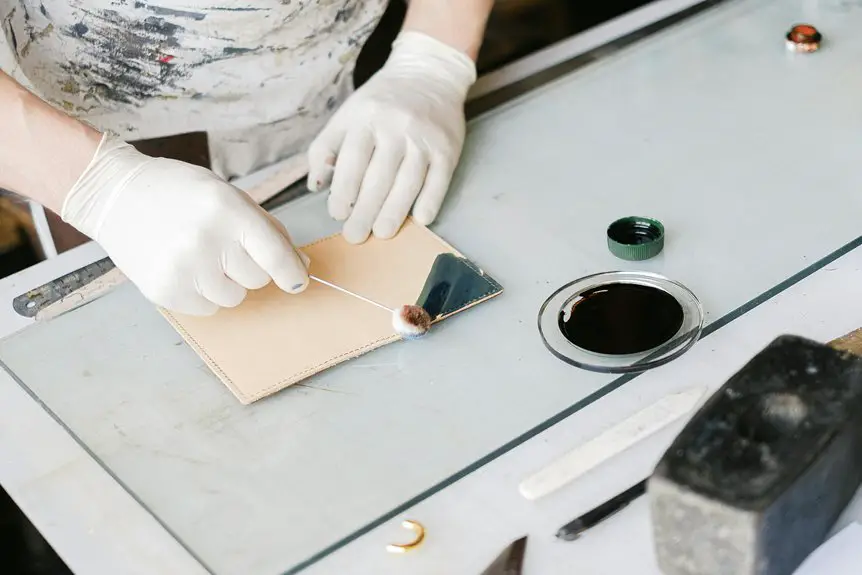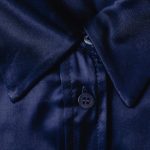If you’re working with Kevlar parts in France, you’ll find key industries like aerospace, automotive, and sports gear rely on its strength and lightness. Fabrication involves precise cutting, resin bonding, and skilled labor, all influencing costs alongside material grade and production volume. While Kevlar offers durability and heat resistance, it demands special handling to avoid fraying and skin irritation. You’ll also discover how innovations and cost factors shape its use across these sectors.
Table of Contents
Key Takeaways
- French aerospace and automotive industries heavily use Kevlar for lightweight, durable, and heat-resistant parts enhancing safety and performance.
- Fabrication involves precision cutting, careful resin curing, and layering techniques to maximize Kevlar’s strength and durability.
- Higher-grade Kevlar fibers and complex designs increase fabrication costs, while larger production volumes reduce unit prices through economies of scale.
- Specialized tools like waterjet and laser cutters are essential to avoid fiber fraying and heat damage during Kevlar part manufacturing.
- Future trends in France include automated weaving, eco-friendly resins, and digital design integration to improve efficiency and sustainability in Kevlar fabrication.
Overview of Kevlar Material Properties
Kevlar stands out for its exceptional strength-to-weight ratio and durability. When you work with Kevlar, you’ll notice how its fibers resist stretching, making it incredibly tough under tension.
This material also offers excellent resistance to heat and abrasion, so your parts can handle harsh environments without degrading quickly. Unlike metals, Kevlar won’t corrode, which means your components stay reliable longer.
You’ll appreciate its lightweight nature, especially when weight reduction is essential for performance or comfort. However, Kevlar isn’t very stiff, so it’s best combined with other materials for structural stability.
Key French Industries Utilizing Kevlar
You’ll find Kevlar playing an essential role in France’s aerospace sector, boosting innovation and safety.
The automotive industry uses it to enhance vehicle protection and durability.
Plus, sporting goods manufacturers rely on Kevlar to create lightweight, strong equipment that performs under pressure.
Aerospace Sector Innovations
Although the aerospace industry demands materials that combine strength and lightness, French companies have mastered incorporating Kevlar into their designs to meet these needs.
You’ll find Kevlar used extensively in aircraft interiors, structural components, and protective gear for pilots. This advanced fiber helps reduce weight while enhancing durability and safety.
Here are three key aerospace innovations using Kevlar in France:
- Kevlar-reinforced composite panels that improve impact resistance without adding bulk.
- Lightweight Kevlar-based insulation that protects sensitive avionics from heat and vibration.
- Pilot helmets and flight suits made with Kevlar fibers to offer superior ballistic protection.
Automotive Safety Enhancements
French industries continue to push the boundaries of safety by integrating advanced materials into vehicle design.
When you choose vehicles with Kevlar-reinforced components, you benefit from enhanced impact resistance and reduced weight, which improves overall safety and fuel efficiency.
French automakers incorporate Kevlar into door panels, bumpers, and protective linings to absorb collision forces more effectively, protecting passengers better than traditional materials.
You’ll also find Kevlar in tire reinforcement, reducing the risk of blowouts and improving durability.
By using Kevlar, manufacturers guarantee vehicles meet strict safety standards while maintaining performance.
If you’re involved in automotive design or maintenance, understanding Kevlar’s role can help you appreciate these safety improvements and support innovations that save lives on French roads.
Sporting Goods Manufacturing
Several leading sporting goods manufacturers in France rely on Kevlar to enhance the performance and durability of their products.
When you choose gear made with Kevlar, you get exceptional strength without added weight, which makes a big difference in sports.
French companies use Kevlar in:
- Protective equipment like helmets and pads, offering superior impact resistance.
- High-performance bicycles, where Kevlar fibers improve frame strength and reduce fatigue.
- Tennis rackets and other racquets, increasing durability and control during intense play.
Techniques for Fabricating Kevlar Components
When fabricating Kevlar components, you’ll start by cutting and shaping the material with precision tools to maintain its strength.
Next, you layer the Kevlar sheets carefully before moving on to the curing process, which solidifies the structure.
These techniques guarantee the final parts are both durable and reliable.
Cutting and Shaping
Cutting and shaping Kevlar requires specialized tools and careful handling due to its tough, fibrous nature. You can’t use standard blades or scissors without risking fraying or uneven cuts. Instead, you’ll want to use equipment designed for composites to maintain clean edges and precise shapes.
Here are three key techniques:
- Waterjet Cutting: Uses high-pressure water mixed with abrasive particles to slice through Kevlar cleanly without heat damage.
- Laser Cutting: Provides precision but needs careful calibration to avoid melting or burning fibers.
- Rotary Blades with Vacuum Systems: Specialized rotary cutters paired with vacuum extraction minimize fraying and control dust.
These methods help you achieve accurate dimensions while preserving Kevlar’s structural integrity, essential for reliable, high-performance parts.
Layering and Curing
Although Kevlar’s strength comes from its fibers, layering and curing determine the final component’s performance and durability.
When you layer Kevlar, you align the fibers carefully to maximize strength in specific directions. You’ll typically stack multiple layers, each oriented at different angles to enhance toughness and impact resistance.
Once layered, you apply resin to bind the fibers, ensuring the material holds together under stress.
Next, you cure the composite, usually by applying heat and pressure. This step solidifies the resin, locking the fibers in place and creating a rigid, durable part.
The curing process varies depending on the resin system, but precise temperature control is essential. If you skip or rush curing, the Kevlar piece won’t reach its full strength or longevity.
Challenges in Working With Kevlar
Because Kevlar’s unique strength and durability come from its tightly woven fibers, handling and shaping it can be quite demanding.
You’ll find that cutting Kevlar requires specialized tools since traditional blades dull quickly. Also, its resistance to heat means you can’t rely on simple thermal methods to mold it easily. Furthermore, the fabric’s tendency to fray complicates precise assembly.
Here are three main challenges you’ll face working with Kevlar:
- Cutting precision – You need high-quality, sharp tools designed specifically for Kevlar to avoid ragged edges.
- Layer bonding – Achieving strong adhesion between layers demands careful resin application and curing control.
- Protective measures – Kevlar fibers can irritate your skin, so always wear gloves and protective clothing.
Mastering these will improve your fabrication process markedly.
Innovative Applications of Kevlar in France
Innovation drives France’s use of Kevlar, pushing the material beyond traditional boundaries.
When you explore French industries, you’ll see Kevlar integrated into automotive parts to enhance safety while reducing weight. You’ll also find it in aerospace, where its durability and heat resistance improve aircraft performance.
In sports, French manufacturers craft helmets and protective gear using Kevlar, offering athletes superior protection without extra bulk.
French sports gear uses Kevlar to provide top protection with minimal weight.
Additionally, you can spot Kevlar in construction, reinforcing concrete and preventing structural failure.
French designers even incorporate Kevlar into fashion, blending strength with style.
By adopting these innovative applications, you tap into Kevlar’s versatility, making it indispensable across sectors.
As you consider Kevlar for your projects, remember France continually pioneers new ways to maximize its unique properties.
Cost Factors Influencing Kevlar Part Production
When you decide to produce Kevlar parts, understanding the cost factors involved is essential to managing your budget effectively. Several elements directly impact the price you’ll pay and the quality you’ll receive.
Here are the top three cost factors you should consider:
- Material Quality and Grade: Higher-grade Kevlar fibers cost more but provide better strength and durability, influencing overall part performance.
- Manufacturing Complexity: Intricate designs or tight tolerances require advanced fabrication techniques, increasing labor and machine time expenses.
- Production Volume: Larger orders generally reduce the unit cost due to economies of scale, while small batches can be considerably pricier.
Future Trends in Kevlar Fabrication in France
As you explore Kevlar fabrication in France, you’ll notice emerging technologies and sustainable practices reshaping the industry. Innovations like automated weaving and eco-friendly resin systems are improving efficiency and reducing environmental impact. French manufacturers focus on lightweight, high-strength composites for automotive and aerospace sectors, boosting performance while cutting costs. You can expect increased integration of digital design tools and recycling initiatives to drive future growth.
| Trend | Impact | Timeline |
|---|---|---|
| Automated Weaving | Higher precision, faster production | 1-3 years |
| Eco-friendly Resins | Reduced carbon footprint | 2-4 years |
| Digital Design Tools | Customization & rapid prototyping | Ongoing |
Frequently Asked Questions
How Is Kevlar Recycled or Disposed of After Use in French Industries?
You can recycle Kevlar by chemically breaking it down or repurposing scraps, but disposal often involves incineration due to its durability. French industries focus on eco-friendly methods to minimize environmental impact while handling Kevlar waste responsibly.
Are There Any French Regulations Specifically Governing Kevlar Manufacturing?
You’ll find that France enforces strict chemical safety regulations, like REACH, impacting Kevlar manufacturing. Over 60% of French composites firms comply with these rules, ensuring environmental and worker safety throughout production processes.
What Are the Environmental Impacts of Kevlar Production in France?
You should know Kevlar production uses energy and chemicals, causing emissions and waste. In France, strict environmental laws force manufacturers to minimize pollution and manage waste responsibly, helping reduce the overall environmental impact.
Can Kevlar Be Combined With Other Materials for Enhanced Properties?
You can combine Kevlar with materials like carbon fiber or resin to boost strength, flexibility, and heat resistance. This hybrid approach lets you tailor properties for specific uses, enhancing overall performance considerably.
Are There Training Programs in France for Kevlar Fabrication Skills?
Like a blacksmith mastering fire, you can find training programs in France that teach Kevlar fabrication skills. These courses sharpen your hands-on expertise, letting you weave strength and resilience into every fiber you craft.
- The Ultimate Care Guide for Your Chanderi Sarees - June 25, 2025
- Does Chanderi Silk Shrink? A Complete Care and Washing Guide - June 25, 2025
- How to Wash Chanderi Silk at Home Without Damaging It - June 25, 2025






